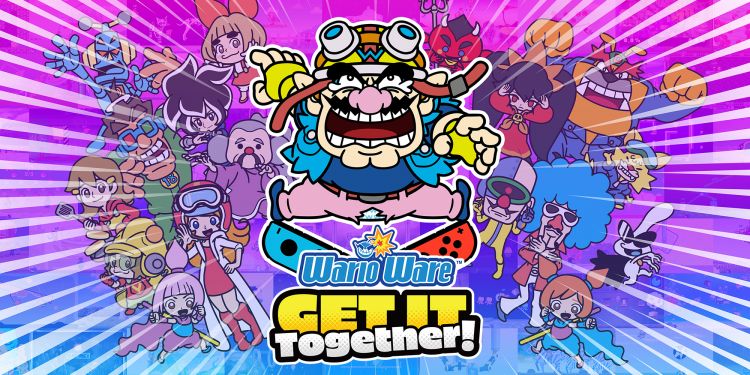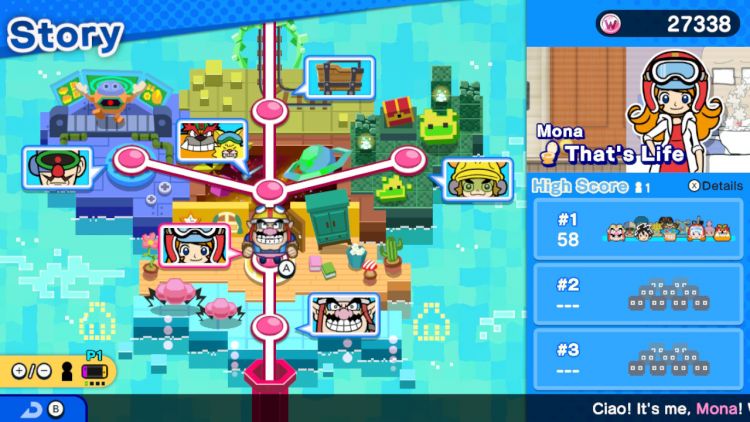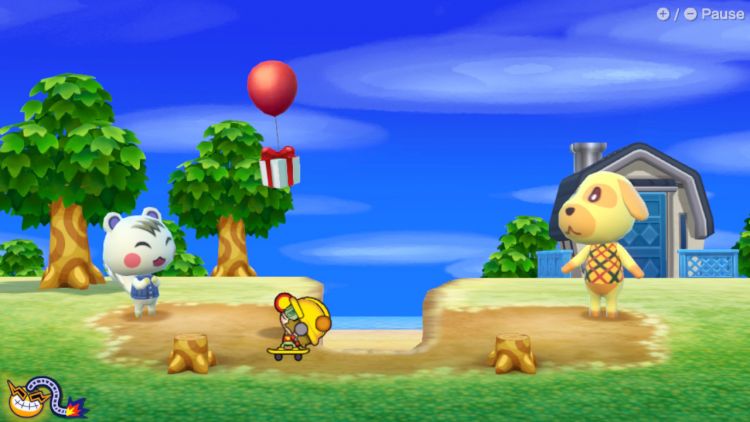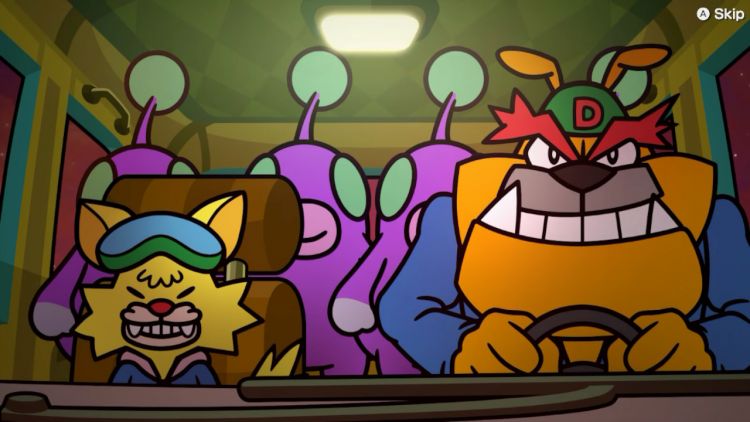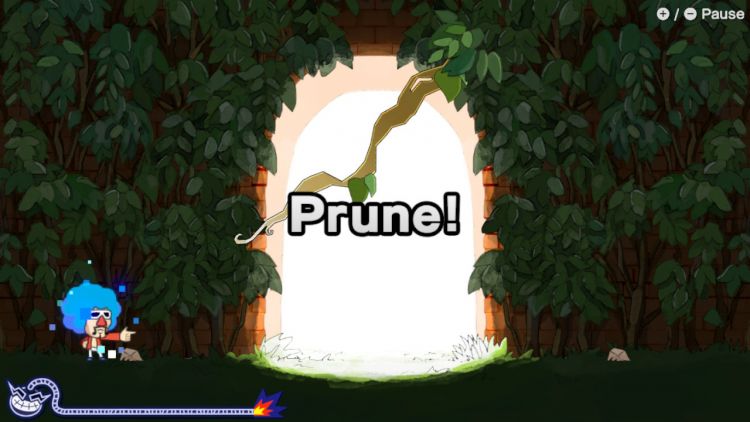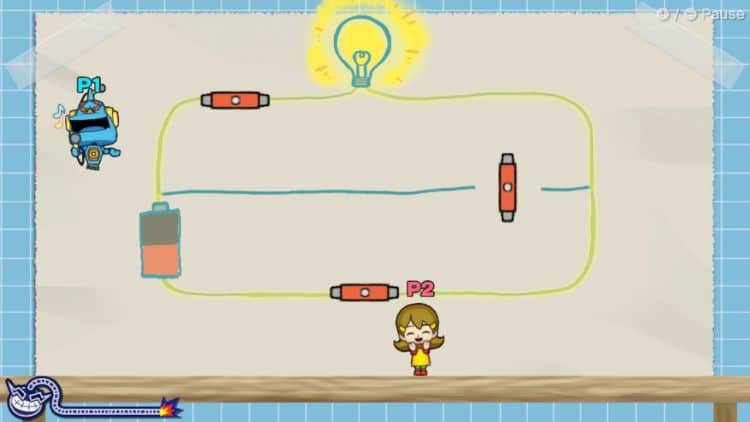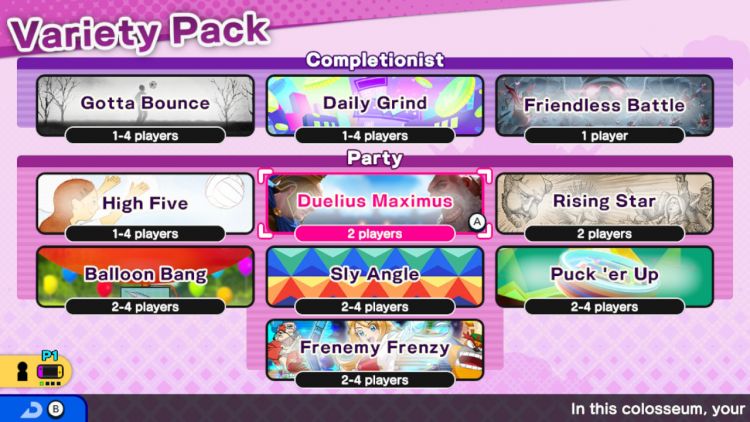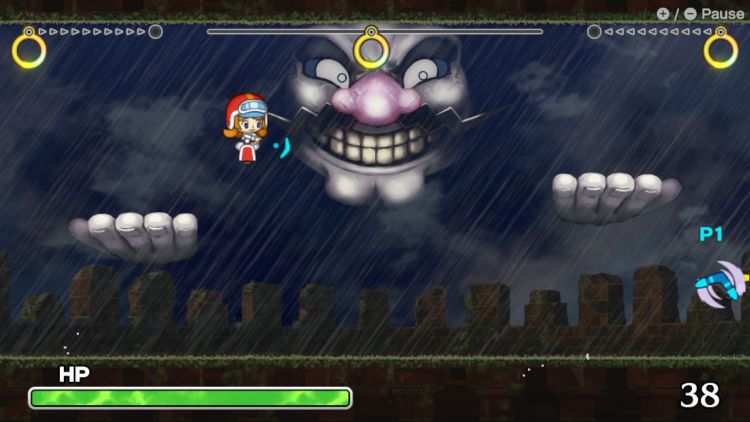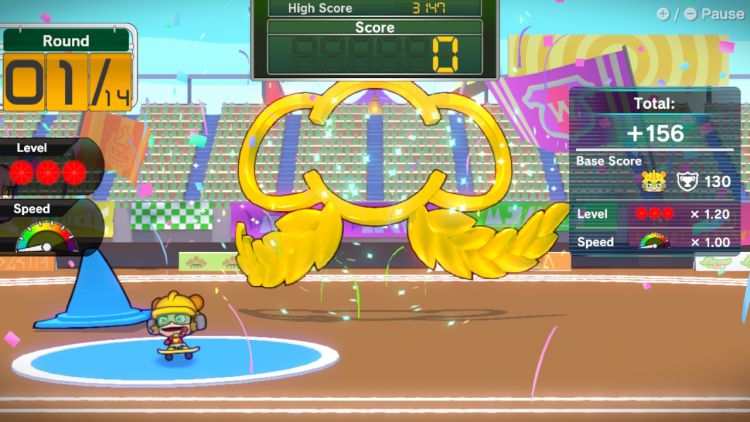Nintendo often feels like the picture of corporate efficiency. Their IPs are safe and marketable, occasionally to the point of being sterile, and you can almost always recognize their games by their unmistakable polish. If Nintendo could be boiled down to a person, it would be your uptight friend who makes their bed every morning, clocks in at 9 and out at 5, and gets to bed by 10.
The WarioWare franchise is what happens when you drag that friend out to the bar on a Friday night and get a few drinks in them. They start to show you a side of themselves that is just a little skewed, and hidden quirks in their personality shine through.
WarioWare: Get It Together is undeniably a Nintendo game. It’s intelligently designed, packed with creative ideas, and features a twist on gameplay that makes the entry feel unique to the series. What elevates it from good to very good, however, is the way it infuses professional design with an unpolished personality. WarioWare: Get It Together is a glimpse into Nintendo’s id, a well-crafted gameplay experience presented as a loud and unending flow of colorful, but occasionally shallow, ideas.
Game Name: WarioWare: Get It Together
Platform(s): Nintendo Switch
Publisher(s): Nintendo
Developer(s): Intelligent Systems
Release Date: September 10, 2021
WarioWare: Get It Together’s addicting story mode is where you’ll find the bulk of what this title has to offer. Here, you’ll experience the game’s gripping narrative. Wario is leading development on his latest game, surrounded by his stalwart (and 50 percent child) labor force, when suddenly the game sucks him and the team inside. In order to fix the game and escape, the crew must complete various “microgames,” which are seconds-long minigames based around one or two word prompts. Intelligent Systems wisely keeps this overarching narrative to a minimum, but the cutscenes that occur between stages are generally funny thanks to some witty visual gags.
Gameplay is where Get It Together thrives due to creative microgames delivered in delightfully absurd packaging. Story mode is broken into stages that are just microgame packs built around a common theme. Mona’s stage, “That’s Life,” features microgames based around daily activities like picking your nose and cleaning a jail cell before bringing in a lady friend. 9-Volt’s Nintendo themed stages make a return as well, tasking players with delivering presents to villagers in Animal Crossing and collecting power-ups in Super Mario Land.
All together, WarioWare: Get It Together’s microgames take you on a wonderful journey into the bizarre. You’ll bury cat poop, save a vampire by closing blinds, and help a paper Wario win a wrestling match as you play through story mode and aim for high scores. Almost every one of the 200 microgames included features some wacky, intentionally amateurish animations that players of all ages will laugh at. There’s an irreverence uncommon to Nintendo games found in WarioWare: Get It Together, and I found myself constantly scouring backdrops for blink and you’ll miss it details that never ceased to amuse.
Previous WarioWare games struggled to stay fresh because clearing the same microgames the same way hundreds of times is the definition of repetitive. Get it Together provides an elegant solution that delays, but doesn’t prevent, that inevitable wave of familiarity. This time around, players control Wario and his … I’d guess you’d call them friends? … directly in each game. Before you jump into a level, you’ll select between three and five characters to control during the stage. Each character has unique abilities that change the way they play. While Wario can fly and use his shoulder bash to ram into a dangling banana to hypnotize someone, 18-Volt needs to sit in place and throw CDs to make the bananas rock. It’s up to you to determine which team of characters gives you the best chance of success.
WarioWare: Get It Together’s characters infuse an already kinetic game with even more energy. When your score gets high and the game speeds up, you’re forced to absorb a ton of information rapidly to succeed. You have to internalize how your character plays, what the microgame is, where the key objects in the game are, and determine how to achieve the goal, all in nanoseconds. Meanwhile, vibrant backgrounds explode with joy and color when you succeed and grow dark and dour when you fail. It’s hard not to get sucked into the game’s rhythm. I’ve often found my mind rushing at triple speed long after I’ve put my Switch down after a particularly successful run, and the only cure I’ve found is to head back for one more game.
The character system also makes exploring each microgame pack more rewarding, boosting the game’s replay value. A character with extreme strengths may be the perfect fit for one set of games, but totally feeble in another. For example, 5-Volt’s ability to teleport anywhere on the screen makes her a great fit for 9-Volt’s Nintendo Classics, where a lot of the games involve getting to a specific location. She’s noticeably weaker at Ashley’s food-based games though, as they’re better faced with characters who can rapidly hit and push targets. Determining which crew gives you the best chance of success in a given game adds a layer of strategy not found in previous WarioWare titles.
As rewarding as the character system is overall, it does have its drawbacks. Some characters are definitely stronger than others. Poor 9-Volt, who can’t jump and is constantly moving left and right on his skateboard, is almost never the character best suited for the job, and he certainly never cracks the Top 5 useful characters list for any game set. When you start reaching top speeds, controlling him becomes borderline impossible. There’s never a good reason to use him beyond a challenge run, and he is not alone. Kat & Ana and Pyoro are nearly as useless. The goal of the game is to get high scores, and using characters who are inherently worse at achieving that goal doesn’t make practical sense. It won’t be long before most players drift towards the characters who can fly and shoot projectiles, which undermines the game’s ability to fend off repetitiveness.
WarioWare: Get It Together’s story mode is fun to play by yourself, but it also benefits from a solid local co-op mode. Most of the microgames are unchanged by adding a second player, but a few of them up the difficulty a bit. As small as those changes are, playing with two players does change Get It Together’s overall vibe. Success requires good communication, and against tight timers you’ll often find yourself and Player 2 screaming over one another, belting out who needs to do what. Breaking high scores is always rewarding, and it’s doubly satisfying to set a new record with a buddy.
Story mode is the main attraction, but if you’re feeling a more competitive multiplayer experience, the Variety Pack has several enjoyable games as well as some dull clunkers. The strongest games stick to WarioWare’s strengths, microgames, while spins on volleyball and fighting games have less success. “Daily Grind” (a droll side-scroller where you pick up contracts and bring them to the end of each stage,) “Gotta Bounce” (a spin on a childhood classic game – “keep the balloon in the air,”) and “Friendless Battle” (a single-player fighting game that’s basically Endless Melee from the Super Smash series) feel like a waste of time.
On the flip side, games like Duelius Maximus, Rising Star, Balloon Bang, and Puck ‘er Up are solid multiplayer fun. Duelius Maximus has two players racing to complete microgames first. Rising Star has players working cooperatively to complete microgames, but after each game a charmingly animated god determines who contributed more and rewards that player with a star. The judging is occasionally questionable, but that adds to the fun in a game this lighthearted. Balloon Bang is a take on Hot Potato. Up to four players can participate, and one player clears a microgame while others work to pump up a balloon that eventually explodes. The loser is the player who is stuck in the microgame when the balloon goes off. Finally, Puck ‘er Up puts players in an air hockey arena. Whoever scores the puck plays a microgame on a small screen, while players outside the screen try to shake and mess it up. If the microgamer succeeds, they earn a point. If they lose, the players outside do. None of these games are good enough to hold your attention for hours, but they are enjoyable side games that round out the package.
Finally, WarioWare: Get it Together features a mediocre competitive online multiplayer mode called Wario Cup. Players compete for high scores in weekly challenges that range from clearing as many microgames in a row as possible to beating a set of games as quickly as you can. Everything works fine enough, with players being awarded in-game currency based on what percentile they rank in by the end of the week, but through three weeks I’ve found the challenges to be more frustrating than fun.
This week’s challenge, for example, requires players to take on games with fire and ice themes with a crew of two. The game speed increases after two games, which makes the games at the end frantic fun. Unfortunately, the games all appear in the same order, and if you don’t succeed at each game, you’ve got no chance at a high score. That means restarting and clearing the easy opening games dozens of times just to get a shot at the tricky games at the end. A lot of the fun in WarioWare comes from never knowing what the game will throw at you next, and the Wario Cup eliminates that entirely during some weekly challenges.
A baffling scoring system makes matters worse. Using the game’s weakest characters nets more points in each challenge, which is a cool way to encourage players to use characters outside their comfort zone, but those points can be modified by heading to the Break Room on the hub screen. There, you can spend coins earned throughout the game on presents for characters. By giving gifts, you’ll unlock character artwork, new customizable and pre-set color pallets, and boosts the number of points a character nets in the Wario Cup. This makes spending a frustrating amount of time throwing gifts at people in the Break Room nearly mandatory to reach the top rank.
Despite uneven side modes and online content, WarioWare: Get It Together is still a game that fans of the series will love. It’s a strange, joyful journey into the wild minds of the team at Intelligent Systems, and tearing through microgames with your favorite characters in pursuit of high scores will satisfy everyone who has fond memories of days at the arcade. From the little character vignettes that play before each stage to a cat giving you a thumbs up for burying its poop, WarioWare: Get It Together leaps at every chance to drag you into its mystifying world. It’s not the type of game that will win over those who play games for a deep narrative or groundbreaking gameplay, but everyone else should give this one a look.
WarioWare: Get It Together is a delightful trip into Nintendo's Id
Summary
WarioWare: Get it Together is a strong addition to the series. Its character-based gameplay adds a unique spin to moment-to-moment action, even if most players will only use about half the roster. An irreverent and crude sense of humor elevates the experience and makes you wonder if Nintendo’s other franchises wouldn’t be better served by becoming a bit more messy.
Pros
- Over 200 microgames to explore, with a wide range of ways to complete most of them
- Fantastic animations during gameplay and cutscenes
- Bizarre sense of humor that could thaw even the coldest of hearts
- The character system works well and adds to the replay value…
Cons
- … but weak characters are not fun to use and will be ignored by most players
- Mediocre side modes
- Story mode takes about two hours to complete, and those who don’t love chasing high scores will be out of content quickly


